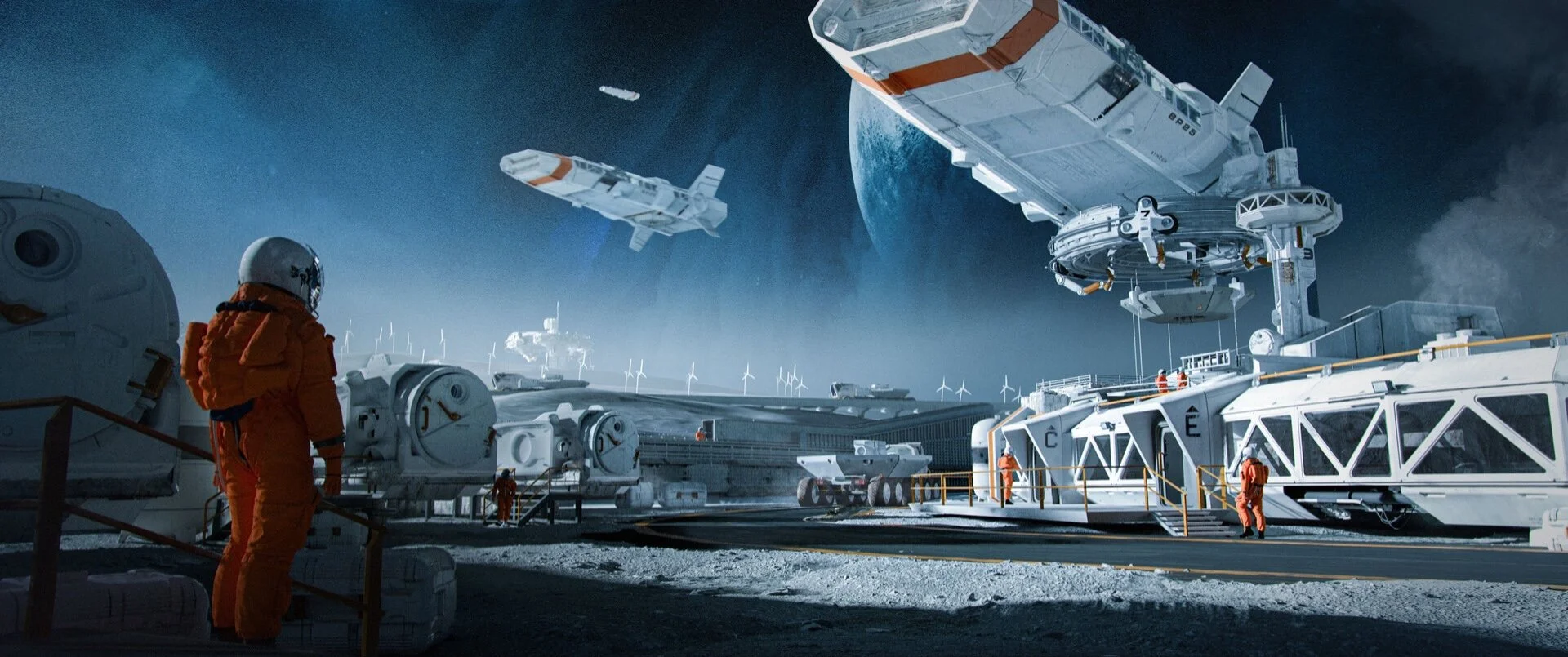Moonports & L1: The Cislunar Logistics Spine
A moonport on a lunar base (concept art).
Credit: Alvaro Martin on Artstation
How staging nodes make every other business cheaper
Cislunar traffic multiplies and benefits from economies of scale when you can plan around a dependable hub. A moonport at a polar site and a depot at Earth–Moon L1 together form a logistics spine: vehicles are optimised for segments, propellants are transferred efficiently, and maintenance has a home. This hub-and-spoke pattern is how aviation scaled; space simply adds cryogenics, radiation, and celestial mechanics to the operations manual.
The value isn’t just turnarounds; it’s coordination. Slot management, trajectory brokering, and integrated customs-like processing for space-made goods reduce uncertainty for every mission architect. In a world of constellations, stations, and factories, a moonport behaves like a neutral exchange—visibility into berths, power, data and fuelling windows lets multiple operators plan confidently without bilateral complexity.
Commercially, that leads to familiar products. Membership tiers mirror airline alliances; berthing and propellant fees sit beside inspection, repair and priority services. The customers—station operators, lander providers, national programmes—already spend on these needs; they just buy them today as bespoke line items. The channel is built on relationships with launchers, spacecraft OEMs and insurers who appreciate risk reduction. Adoption grows through “green-lane” agreements that guarantee turnaround times, shared simulation environments for mission planning, and performance bonds that make service levels tangible. Once utilisation stabilises, the spine becomes the reference itinerary others design around—lowering costs across the ecosystem without new physics.
